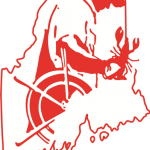Tag Archives: water quality

Louisiana Fisherman Talks Water Quality and Nutrient Reduction with Iowa Farmers
Nutrient runoff from Iowa agriculture is one of the leading causes of the growing “dead zone” in the Gulf of Mexico, an oxygen-deprived section of the Gulf, which last year was recorded to be the size of the state of New Jersey. “About 29 percent of the load coming into the Gulf originates in Iowa,” says Larry Weber, an executive associate dean professor in the University of Iowa’s College of Engineering. “If we take the Iowa portion out of the Gulf, then the nitrate load to the Gulf of Mexico would be going down. The real challenge in fixing the Gulf hypoxia starts in Iowa.” In this special edition of River to River, host Clay Masters talks with panelists about what Iowa farmers are doing, or not doing, when it comes to reducing nutrient runoff into the Mississippi River. He also speaks with Thomas Olander, Chairman of the Louisiana Shrimp Association and a fourth generation shrimper. Audio report >click to listen<10:23

Cantwell’s legislation provides regulatory relief for smaller vessels like crab and salmon boats
WASHINGTON, D.C. – U.S. Senator Maria Cantwell (D-WA) introduced the Fishing and Small Vessel Relief Act (S.2194) to extend protections for fishermen and small vessel owners from adhering to costly requirements that do not tangibly protect or improve water quality for vessels of their size. An EPA study found that incidental discharges from these small vessels do not generate a significant threat to our waters. The bill will extend a current moratorium that exempts fishing vessels and vessels under 79 feet from incidental discharge permitting requirements mandated by the Environmental Protection Agency (EPA). These vessels have been continuously exempt since 2008 under a temporary moratorium as they do not pose a serious environmental risk. click here to read the story 21:35
Gov. McAuliffe Celebrates Signing of New Chesapeake Bay Watershed Agreement
 The Agreement, developed over the last two years, lays out clear goals and outcomes for sustainable fisheries, vital habitats, water quality, toxic contaminants, healthy watersheds, stewardship, land conservation, public access, environmental literacy, and resiliency of the Bay ecosystem in the face of changing climatic conditions and rising sea levels. Read more here 18:44
The Agreement, developed over the last two years, lays out clear goals and outcomes for sustainable fisheries, vital habitats, water quality, toxic contaminants, healthy watersheds, stewardship, land conservation, public access, environmental literacy, and resiliency of the Bay ecosystem in the face of changing climatic conditions and rising sea levels. Read more here 18:44
High Prices, Low Production; Gulf Oysters at Zero Population
 From Texas to Florida, the number of oysters harvested in the Gulf is at one of the lowest on record. Three years after the Deepwater Horizon Oil Spill, oyster industry experts have no answers on the cause of the steep decline; especially on public grounds relied upon by commercial fishermen. gulfseafoodnews Read more here 12:51
From Texas to Florida, the number of oysters harvested in the Gulf is at one of the lowest on record. Three years after the Deepwater Horizon Oil Spill, oyster industry experts have no answers on the cause of the steep decline; especially on public grounds relied upon by commercial fishermen. gulfseafoodnews Read more here 12:51
Someone is confused! (hope it ain’t me) Puget Sound Jellyfish show up in areas of poor water quality – Foragefishapalooza!
 Is it water quality? or is it not? Did forage fish leave because the water sucks, or is it overfishing? “The important thing,” said Rice, “is that people are trying to understand this stuff. It is exciting to compare notes and talk about how things are being pushed around at the bottom of the food chain. Our observations so far are consistent with going down the jelly road.” Read more here oregonelive 16:38
Is it water quality? or is it not? Did forage fish leave because the water sucks, or is it overfishing? “The important thing,” said Rice, “is that people are trying to understand this stuff. It is exciting to compare notes and talk about how things are being pushed around at the bottom of the food chain. Our observations so far are consistent with going down the jelly road.” Read more here oregonelive 16:38
Pharmaceuticals and personal care products (PPCPs) are found in surface waters worldwide. Wastewater treatment plant effluent is a major source
 Fate and Transport of Three Pharmaceuticals in the Sacramento-San Joaquin Delta – The sharp decline of four pelagic fish species in the Delta in the last decade is just one of several indicators that the ecosystem is severely impaired. Several wastewater treatment plants (WWTPs) discharge into the Delta, directly or through tributaries. Link
Fate and Transport of Three Pharmaceuticals in the Sacramento-San Joaquin Delta – The sharp decline of four pelagic fish species in the Delta in the last decade is just one of several indicators that the ecosystem is severely impaired. Several wastewater treatment plants (WWTPs) discharge into the Delta, directly or through tributaries. Link













































